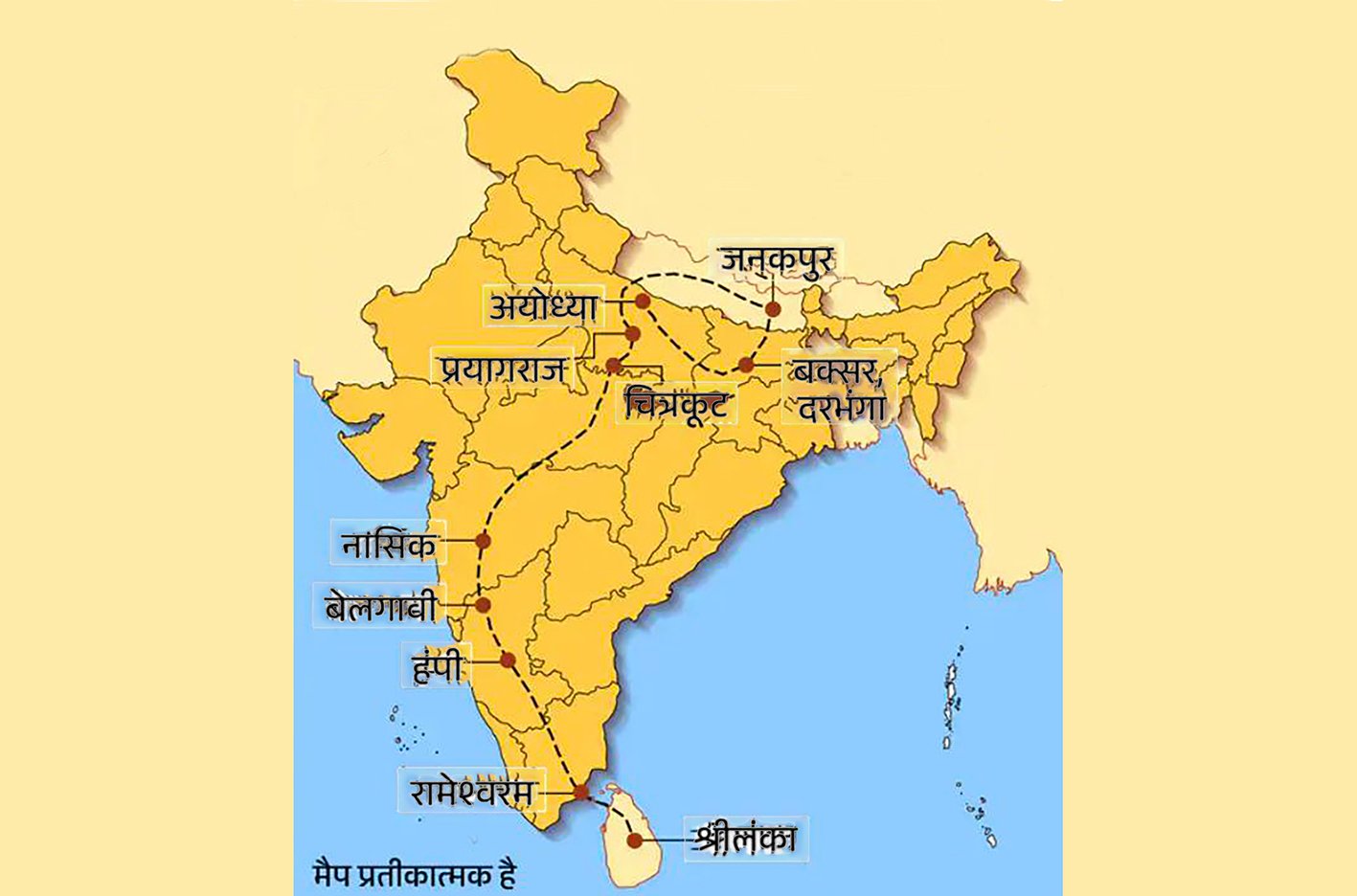10 such places which testify to the existence of Lord Ram!
The legend of Lord Ram, an avatar of Vishnu according to Hindu mythology, is deeply interwoven with various geographical locations across India and even beyond, as narrated in the epic Ramayana. Here are ten significant places believed to be directly connected to his life and the events of the Ramayana:
1.Ayodhya, Uttar Pradesh:
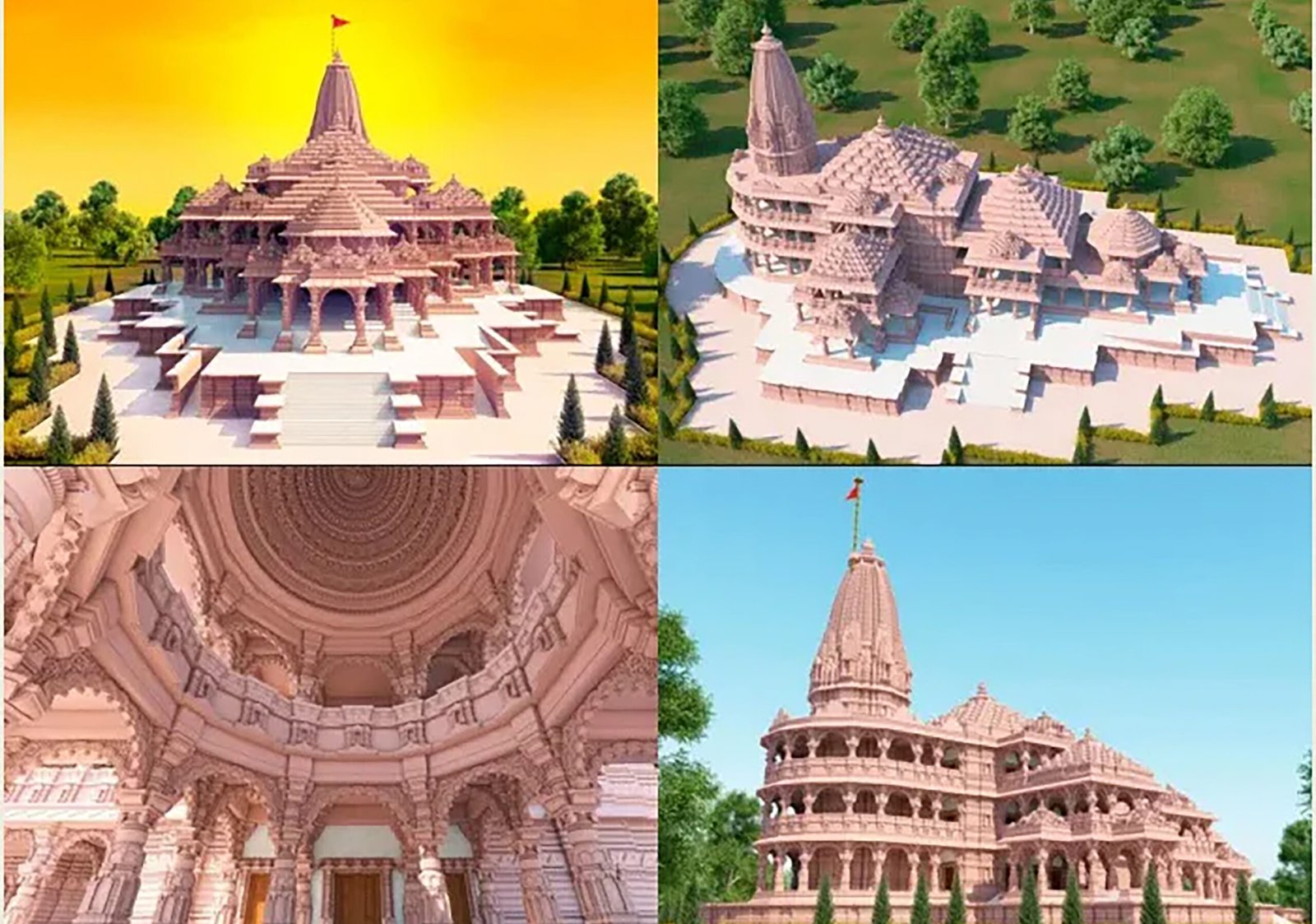
Regarded as the birthplace of Lord Ram, Ayodhya is one of the seven most sacred cities (Sapta Puri) in Hinduism. It’s also the setting for much of the early part of the Ramayana.
Ayodhya, located in the Indian state of Uttar Pradesh, holds immense significance in Hindu mythology and culture as the birthplace of Lord Ram, a major deity worshipped across many Hindu traditions. According to the epic narrative of the Ramayana, Ayodhya is the capital of the ancient Kosala Kingdom and the setting where many of the story’s events unfold, especially the early life of Lord Ram.
Historical and Religious Significance
- Ram Janmabhoomi: The exact spot believed to be the birthplace of Lord Ram in Ayodhya is known as Ram Janmabhoomi. It has been a focal point of religious and political disputes for centuries, culminating in the demolition of the Babri Masjid in 1992 and the subsequent legal battles. In November 2019, the Supreme Court of India ruled in favor of the construction of a Hindu temple.
- Ayodhya in Scriptures: Ayodhya is described in various ancient Indian scriptures, not just the Ramayana but also in several Puranas and the Mahabharata, underscoring its importance. It is portrayed as a city of unparalleled prosperity and beauty, built by the gods and blessed by Lord Vishnu’s incarnation as Ram.
- Saptapuri: Ayodhya is one of the Saptapuri, the seven sacred cities of Hinduism, believed to grant moksha (liberation). The others include Mathura, Haridwar, Varanasi (Kashi), Kanchipuram, Ujjain (Avanti), and Dwarka.
- Festivals and Celebrations: Major Hindu festivals, especially Diwali (the Festival of Lights), are celebrated with great fervor in Ayodhya, believed to mark the return of Ram, Sita, and Lakshman to Ayodhya after 14 years in exile and their victory over Ravana. The city is illuminated with lamps, and various cultural and religious events are organized, drawing visitors from across the world.
- Pilgrimage Site: Ayodhya is a major pilgrimage destination, with numerous temples and ghats (river steps) along the Sarayu River, which is considered sacred. The Kanak Bhawan, Hanuman Garhi, and Ramkot are among the most visited temples, alongside the under-construction grand temple at Ram Janmabhoomi.
Cultural Impact
The story of Ram and the ideals he embodies have deeply influenced Indian culture, ethics, and social norms. Ayodhya, as his birthplace, symbolizes these values, such as righteousness (dharma), devotion, bravery, and the importance of familial and social duties. The city, with its rich tapestry of myth, history, and faith, continues to be a vibrant center of religious life, attracting scholars, devotees, and tourists interested in exploring the enduring legacy of Lord Ram.
2. Janakpur, Nepal:
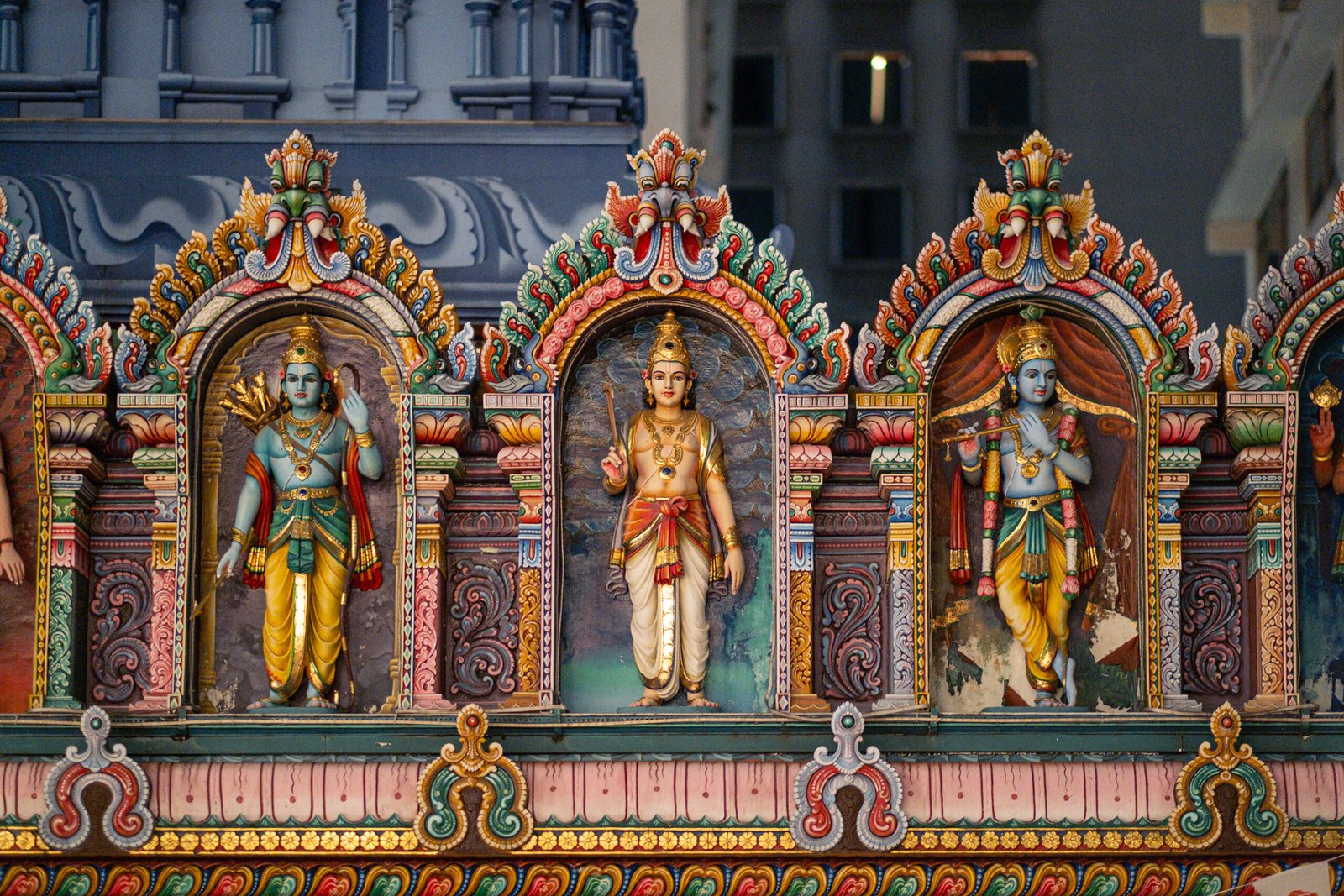
Now in Nepal, Janakpur is believed to be the birthplace of Sita, the consort of Lord Ram and the daughter of King Janak. It’s where Ram won Sita’s hand in marriage by stringing the Shiv Dhanush (bow).
Janakpur, located in the present-day Dhanusa District of Nepal, holds immense significance in Hindu mythology as the birthplace of Goddess Sita, also known as Janaki, the beloved consort of Lord Ram. This historical and cultural city is an important pilgrimage site for Hindus all around the world, drawing thousands of devotees and visitors each year to its sacred temples and ponds.
Historical and Religious Significance
- Janaki Mandir: The centerpiece of Janakpur’s spiritual and cultural life is the Janaki Mandir, also known as the Naulakha Mandir (Temple of Nine Lakh). This magnificent temple, dedicated to Goddess Sita, is a marvel of Indo-Nepalese architecture. It is believed that this spot is the exact location of the ancient palace of King Janak, Sita’s father. The temple’s name, Naulakha, reflects the cost of its construction, said to be nine lakh (nine hundred thousand) rupees at the time it was built in the early 20th century.
- Ram Janaki Vivah Panchami: One of the most significant events celebrated in Janakpur is the Vivah Panchami festival, which commemorates the marriage of Lord Ram and Sita. It re-enacts the wedding ceremony, attracting thousands of pilgrims from Nepal, India, and other parts of the world. The festival symbolizes the deep cultural and religious bonds between Nepal and India, shared through the epic narrative of the Ramayana.
- The Ramayana Circuit: Janakpur is a key destination in the Ramayana Circuit, a route that connects various sites associated with the life and times of Lord Ram, Sita, and other characters from the Ramayana. The inclusion of Janakpur in this circuit highlights its importance in the broader tapestry of places significant to this ancient epic.
- Ponds of Janakpur: The city is also famous for its sacred ponds, with the most notable being Gangasagar, Dhanushsagar, and Ratnasagar. These ponds are associated with various legends and are considered holy by the devotees. Pilgrims often take sacred baths in these ponds, especially during major festivals.
- Cultural Heritage: Beyond its religious significance, Janakpur is also a center for Mithila art and culture, known for its distinctive styles of painting, pottery, and textiles. The city showcases the rich cultural heritage of the Mithila region, with traditions that have been preserved and passed down through generations.
Modern Janakpur
Today, Janakpur is not only a place of pilgrimage but also a city that embodies a blend of ancient traditions and modernity. It serves as a living museum of Hindu culture and mythology, offering insights into the practices, beliefs, and artistic expressions that have shaped the region’s identity over millennia. The city continues to foster cross-border cultural exchange and understanding, symbolizing the shared heritage and enduring bonds between the peoples of Nepal and India.
3. Chitrakoot, Madhya Pradesh and Uttar Pradesh:
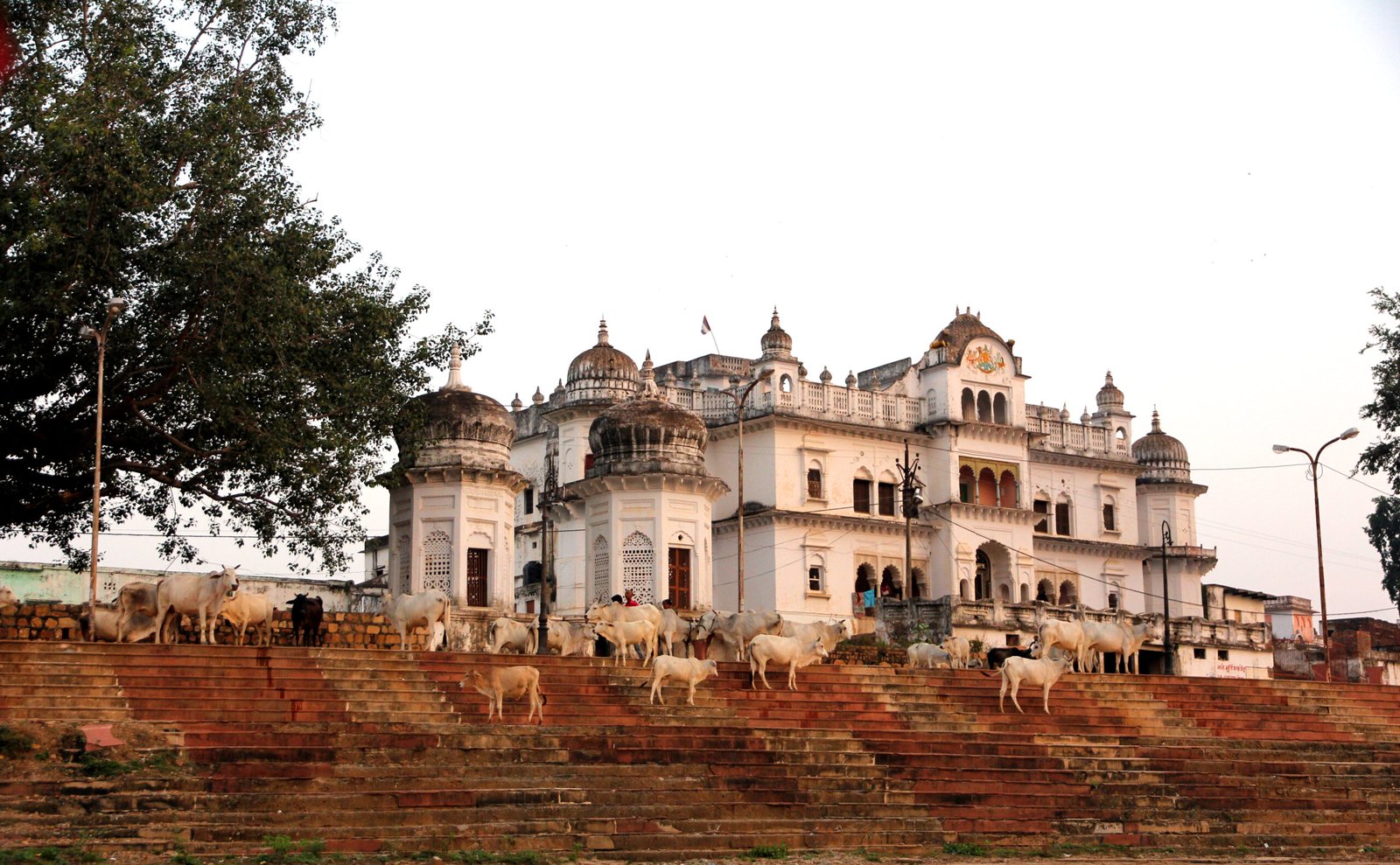
After their exile from Ayodhya, Ram, Sita, and his brother Lakshman spent a significant amount of their time in the forests of Chitrakoot. It’s a place of great natural beauty and spiritual significance.
Chitrakoot, straddling the border between Uttar Pradesh and Madhya Pradesh in India, holds a venerable position in Hindu mythology and religious tradition. According to the epic Ramayana, after being exiled from Ayodhya, Lord Ram, along with his wife Sita and brother Lakshman, spent a significant portion of their fourteen-year exile in the dense forests of Chitrakoot. The serene beauty and tranquillity of Chitrakoot provided them solace during their years of living away from their kingdom. The region is replete with sites associated with their stay, making it a major pilgrimage destination for devotees.
Historical and Religious Significance
- Ramghat: This ghat (riverfront steps) on the banks of the Mandakini River is considered one of the holiest in Chitrakoot. It is believed that Ram, Sita, and Lakshman appeared before the sage poet Tulsidas here. Pilgrims gather at Ramghat for a dip in the river, believing it washes away sins and purifies the soul.
- Kamadgiri: A forested hill considered to be the embodiment of Lord Ram himself. The Sanskrit word ‘Kamadgiri’ means the mountain that fulfils desires. A path encircles the hill, and pilgrims circumambulate it, seeking blessings and fulfilment of their wishes.
- Sati Anusuya Ashrama: Located in the dense forests of Chitrakoot, this ashram is dedicated to Sati Anusuya and her husband Maharishi Atri. It is said that Sita received a discourse on the duties of a devoted wife from Sati Anusuya here.
- Gupt Godavari: A pair of caves near Chitrakoot, where it is believed that Ram and Lakshman held court during their exile. Inside one of the caves, there’s a natural throne formed by rock formations, believed to be used by Lord Ram.
- Hanuman Dhara: A spring located on the hillside, where a stream of cool water falls on the idol of Hanuman, supposedly created to cool him down after he set Lanka on fire. It is a site of great reverence, especially for devotees of Lord Hanuman.
Cultural and Spiritual Impact
Chitrakoot’s association with Lord Ram and its appearance in the Ramayana have made it a site of immense spiritual significance. It attracts pilgrims and tourists not only for its religious importance but also for its natural beauty and tranquility. The region is dotted with temples, ashrams, and holy spots that narrate the tale of Ram’s exile years.
Festivals like Ramnavami (the birth of Lord Ram) and Makar Sankranti (a major harvest festival) are celebrated with great fervor in Chitrakoot. The presence of sages, ascetics, and devotees adds a profound spiritual dimension to the region, making it a focal point for those seeking spiritual growth and enlightenment.
Chitrakoot serves as a living reminder of the virtues of faith, devotion, and the adherence to dharma (righteousness) as exemplified by Lord Ram, Sita, and Lakshman during their exile. It continues to inspire countless generations through its serene landscapes and the sacred narratives that permeate its every corner.
4. Panchavati, Nashik, Maharashtra:
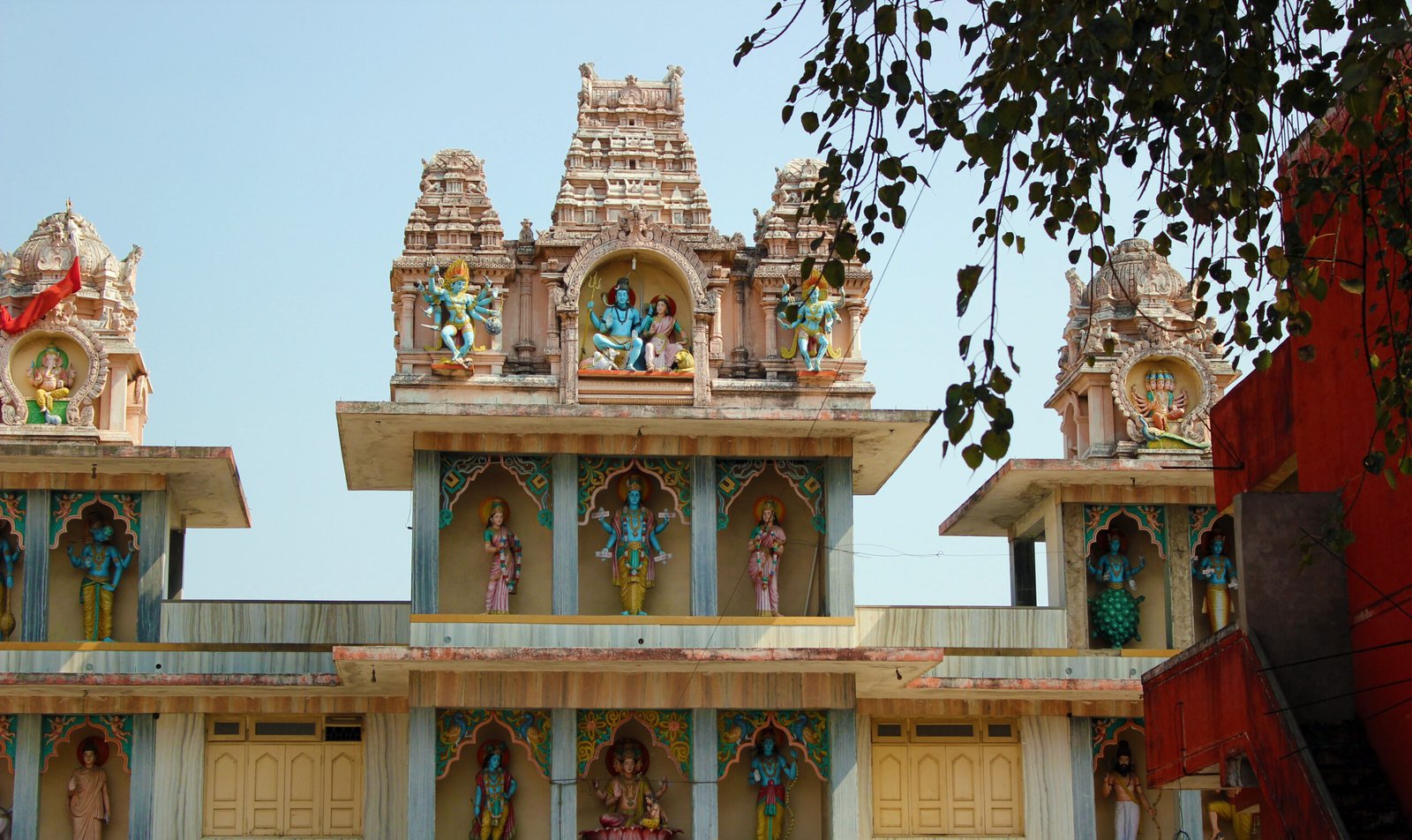
Part of the Dandakaranya forest, this is where Ram, Sita, and Lakshman lived during their exile. It’s closely associated with the abduction of Sita by Ravana. The site is near the modern city of Nashik.
The area you’re referring to is Panchavati, located near the modern city of Nashik in the state of Maharashtra, India. Panchavati holds a significant place in Hindu mythology, especially in the narrative of the Ramayana. It was in the dense forests of Dandakaranya, of which Panchavati was a part, that Lord Ram, his wife Sita, and his brother Lakshman made their home during their 14-year exile from Ayodhya. The name “Panchavati” is derived from the five (panch) banyan (vata) trees under which they are believed to have built their hut.
Historical and Religious Significance
- Sita Gufa (Sita’s Cave): This is believed to be the spot from where Sita was abducted by Ravana, the demon king of Lanka. The cave is small and can be entered through a narrow opening. Inside, there are idols of Lord Ram, Sita, and Lakshman.
- Kalaram Temple: This temple is one of the main attractions in Panchavati. It houses black stone idols of Lord Ram, Sita, and Lakshman. The temple, built in 1788 by Sardar Odhekar of Peshwa, is an architectural marvel and draws devotees and tourists alike.
- Tapovan: Located a little distance from Panchavati, Tapovan is a place of significant ascetic and spiritual importance. It is believed to be the area where Lakshman, the younger brother of Ram, cut off the nose of Surpanakha, Ravana’s sister, thus leading to a series of events that culminated in Sita’s abduction.
- Ramkund: This is a sacred bathing ghat on the banks of the Godavari River in Nashik, believed to be the spot where Ram and Sita used to bathe during their stay in Panchavati. Devotees consider its water holy and often perform rites for the deceased here.
- Goraram Temple: Another important temple in the area, dedicated to Lord Ram. It adds to the spiritual ambiance of Panchavati and is a place of worship and contemplation.
Cultural and Spiritual Impact
Panchavati is not just a historical or mythological site but also a living testament to the enduring legacy of the Ramayana in Indian culture and spirituality. The narrative of Ram, Sita, and Lakshman’s life in the forest, their trials, and tribulations, and the ultimate abduction of Sita by Ravana, are deeply ingrained in the collective consciousness of the Hindu faith.
Pilgrims and tourists visiting Panchavati are drawn not only by its religious significance but also by its natural beauty and tranquility, reminiscent of the ancient Dandakaranya forest. The presence of numerous temples and holy spots makes it a vibrant center of religious activity, especially during festivals related to Lord Ram and the Ramayana.
The city of Nashik, adjacent to Panchavati, is also one of the four sites of the Kumbh Mela, the largest religious gathering in the world, which further underscores the region’s profound spiritual significance. Panchavati continues to be a beacon of faith, drawing seekers from around the world to walk in the footsteps of deities and experience the timeless saga of the Ramayana.
5. Kishkindha, Karnataka:
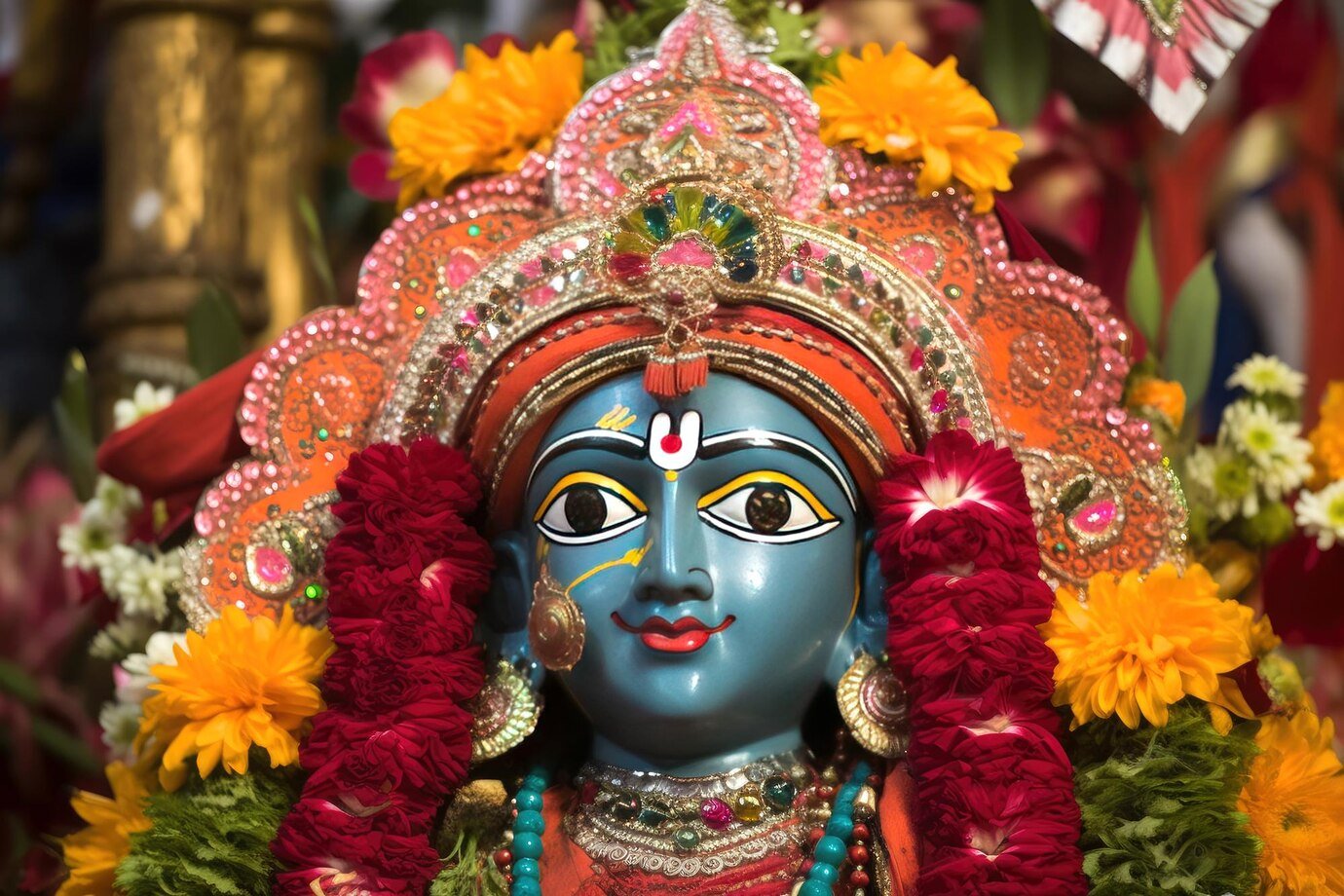
Identified with the region around Hampi, Kishkindha was the monkey kingdom ruled by Sugreeva and where Ram met Hanuman. It’s a significant site for events leading up to the rescue of Sita.
Kishkindha, often identified with the region around Hampi in the Indian state of Karnataka, holds a special place in Hindu mythology, particularly in the narrative of the Ramayana. This ancient kingdom is believed to have been ruled by the Vanara (monkey) king Sugreeva, and it is here that Lord Ram met Hanuman, one of his greatest devotees and an emblem of devotion and loyalty in Hindu culture. The events that unfolded in Kishkindha were pivotal in the search for Sita, who had been abducted by Ravana, and laid the groundwork for the eventual battle in Lanka.
Historical and Religious Significance
- Anjaneya Hill: Considered to be the birthplace of Hanuman, Anjaneya Hill is located on the opposite bank of the river from Hampi. A temple dedicated to Hanuman sits atop this hill, which is accessed by climbing a flight of stairs. Devotees often undertake this climb to pay homage to Hanuman, whose devotion to Ram is celebrated throughout Hinduism.
- Rishimukh Island: This is the place where Ram and Lakshman first meet Hanuman. According to the Ramayana, Sugreeva and his followers were hiding from his brother Vali, and Rishimukh Island, being outside Vali’s reach due to a curse, served as a safe haven. The first meeting between Ram and the Vanara (monkey) kingdom’s emissary marks a significant turn in the epic.
- Pampa Sarovar: This sacred lake near Hampi is associated with several mythological events, including the place where Shabari, an elderly devotee, awaited Lord Ram. Shabari offered Ram and Lakshman berries after tasting them herself to ensure they were sweet. Pampa Sarovar is one of the five sacred sarovars (lakes) mentioned in Hindu scriptures.
- Hampi: The ruins of Hampi, a UNESCO World Heritage Site, are often associated with the mythical Kishkindha. The landscape, dotted with boulders, caves, and the Tungabhadra River, matches descriptions in the Ramayana of Kishkindha’s rocky terrain. Though primarily known for its connection to the Vijayanagara Empire, Hampi’s mythological significance attracts many who are interested in the Ramayana.
- Tungabhadra River: the River flowing through Hampi is considered sacred and is identified with the Pampa River mentioned in the Ramayana. It is on its banks that many of the events of Kishkindha Kanda (the book of Kishkindha) in the Ramayana are set.
Cultural and Spiritual Impact
Kishkindha’s connection to the Ramayana imbues the region with a deep spiritual resonance. The landscape of Hampi, with its historic and mythological landmarks, offers a tangible connection to the epic’s events, bringing to life the story of Ram’s alliance with Sugreeva and the Vanaras.
Pilgrims and tourists visiting Hampi can explore these sites, each echoing tales of devotion, valor, and the pursuit of righteousness. The region not only serves as a reminder of the enduring legacy of the Ramayana in Indian culture but also showcases the natural beauty and architectural grandeur of Karnataka.
Kishkindha’s narrative emphasizes themes of exile, friendship, alliance, and the quest for justice, all of which resonate with the broader values depicted in the Ramayana. It remains a testament to the power of faith, loyalty, and the eternal struggle between good and evil.
6. Rameswaram, Tamil Nadu:
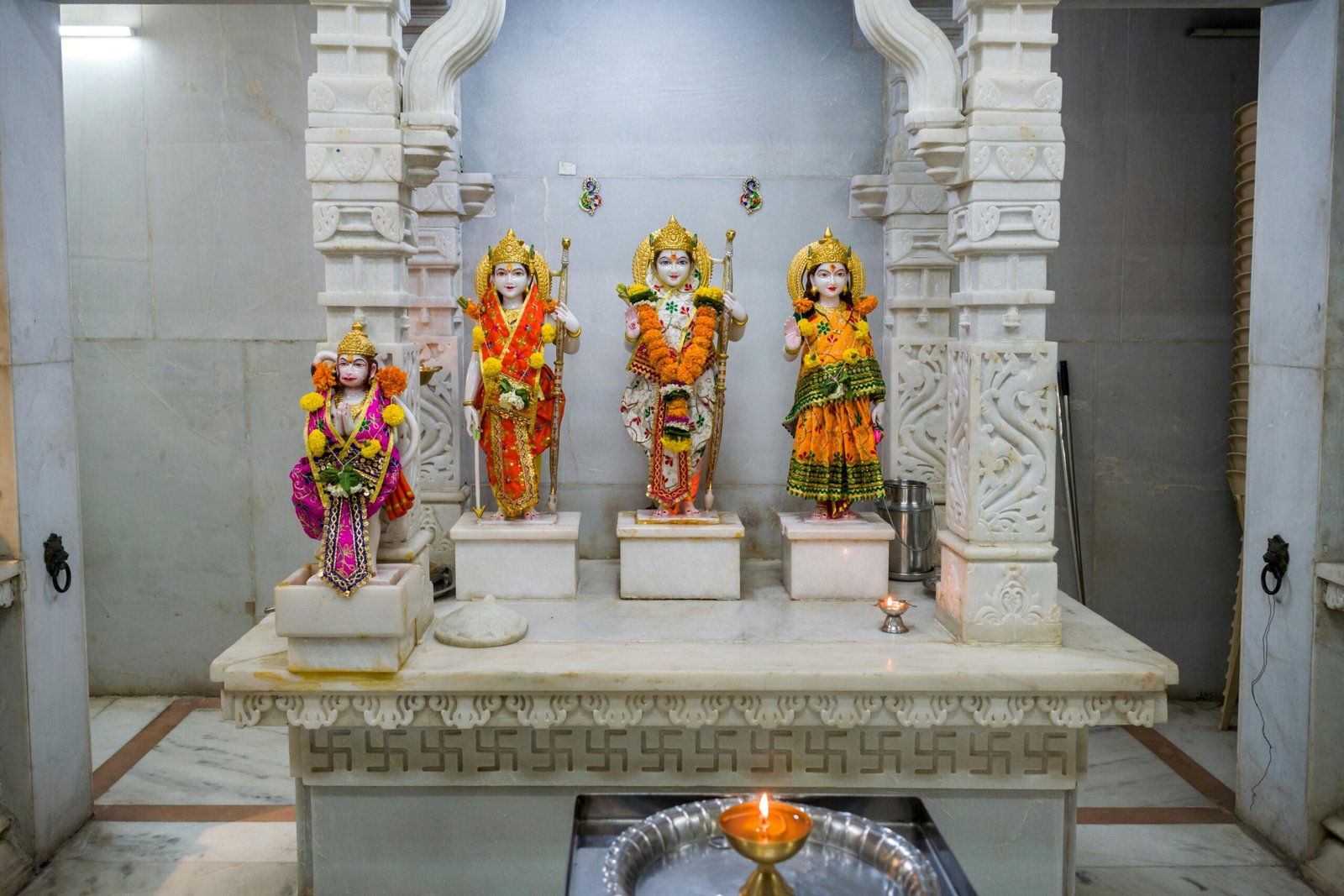
Before the great war with Ravana, Ram is said to have prayed to Shiva here. The Ramanathaswamy Temple stands on this site, where Ram is believed to have built a bridge across to Lanka to rescue Sita. This bridge, Adam’s Bridge or Rama’s Bridge, is a chain of limestone shoals between Pamban Island and Sri Lanka.
The site you’re referring to is Rameswaram, located on Pamban Island, off the southeastern coast of Tamil Nadu, India. Rameswaram is one of the holiest places in India and is a part of the Char Dham pilgrimage. The island is renowned for the Ramanathaswamy Temple, a site of immense religious significance in Hinduism, associated with Lord Ram, the seventh avatar of Lord Vishnu. According to Hindu mythology, before embarking on the battle against Ravana to rescue his wife Sita, Lord Ram is said to have prayed to Shiva here.
Historical and Religious Significance
- Ramanathaswamy Temple: This temple is dedicated to Lord Shiva and houses one of the 12 Jyotirlingas (pillars of light), which are symbolic representations of Lord Shiva and are highly revered in Hinduism. The temple is noted for its striking architecture, long ornate corridors, and the intricately carved pillars. It is believed that the Shivalingam in the temple was established by Lord Ram himself.
- Adam’s Bridge (Rama’s Bridge): This natural chain of limestone shoals running between Pamban Island (near Rameswaram) and Mannar Island of Sri Lanka is believed to be the bridge mentioned in the Ramayana, built by Lord Ram and his Vanara (monkey) army to reach Lanka and rescue Sita. While scientific studies suggest that Adam’s Bridge is a natural formation, it holds immense mythological importance and is considered a testament to Ram’s devotion to rescuing Sita and his faith in Lord Shiva.
- Agnitheertham: This sacred seawater spot located near the Ramanathaswamy Temple is where pilgrims take holy dips before visiting the temple. The waters of Agnitheertham are considered to be purifying, washing away one’s sins.
- Gandhamadhana Parvatham: This hill, located a few kilometers from Rameswaram, is believed to bear the imprint of Lord Ram’s feet on a chakra (wheel). Pilgrims visit to worship the footprints and enjoy panoramic views of the island.
- Five-faced Hanuman Temple: This temple houses the idols of Lord Ram, Sita, Lakshman, Hanuman, and the floating stone used to build the bridge to Lanka. It is a site of great faith where devotees come to offer their prayers.
Cultural and Spiritual Impact
Rameswaram, with its profound mythological connections to the Ramayana, serves not only as a pilgrimage center but also as a testament to the enduring legacy of these ancient narratives in the cultural and spiritual landscape of India. The belief that Lord Ram himself sanctified this place by praying to Lord Shiva and the legendary account of the bridge to Lanka have made Rameswaram a symbol of devotion, perseverance, and the victory of good over evil.
The Ramanathaswamy Temple, with its architectural grandeur and spiritual ambiance, attracts thousands of pilgrims from across the world, seeking blessings and purification. The rituals, architecture, and the natural surroundings of Rameswaram encapsulate the essence of devotion and the rich tapestry of Hindu mythology, making it a vital link in the spiritual and cultural heritage of India.
7. Lanka, Sri Lanka:

Identified with the modern nation of Sri Lanka, Lanka was the kingdom of Ravana, the antagonist in the Ramayana. Places like Ashok Vatika are believed to be in Sri Lanka where Sita was kept captive.
Indeed, Lanka, as depicted in the Hindu epic Ramayana, is widely identified with the modern nation of Sri Lanka. According to the epic, Lanka was a highly fortified kingdom ruled by the demon king Ravana. It is here that Ravana brought Sita after abducting her, and the ensuing battle for her rescue forms the climax of the Ramayana. Several sites in Sri Lanka are associated with this ancient narrative, drawing devotees and tourists interested in the epic’s geographical and historical roots.
Key Locations Associated with the Ramayana in Sri Lanka
- Ashok Vatika (Sita Eliya): This is believed to be the garden where Ravana held Sita captive. Today, the site is identified with Sita Eliya, near the hill resort of Nuwara Eliya. A temple dedicated to Sita, known as Sita Amman Temple, stands near this location, and it is a popular pilgrimage site. The temple area and its surroundings bear several markers of the Ramayana’s narratives, including footprints said to belong to Hanuman.
- Sigiriya (Lion Rock): While not directly mentioned in the Ramayana, some believe that this ancient rock fortress could have been a part of Ravana’s kingdom due to its strategic location and formidable defenses. Sigiriya is famous for its palace ruins on top of a massive column of rock nearly 200 meters (660 feet) high and is a UNESCO World Heritage Site.
- Ravana Falls and Ravana Caves: Located near Ella, these are associated with Ravana. The Ravana Falls are said to be a place where Sita bathed during her captivity. The nearby Ravana Caves are believed to be part of a network of tunnels that Ravana used. These sites are popular with both tourists and devotees for their connections to the epic and their natural beauty.
- Ussangoda: According to Ramayana lore, Ussangoda is one of the places devastated by Hanuman when he was searching for Sita. Today, it is a unique landscape and a biodiversity hotspot, known for its red soil and scientific interest.
- Kelaniya: Believed to be the place where Vibhishana, Ravana’s brother who allied with Ram, was crowned king of Lanka after Ravana’s defeat. The Kelaniya Raja Maha Vihara, a Buddhist temple in Kelaniya, is associated with this event. Although it’s more closely tied to Buddhist traditions, the temple also celebrates its connections to the epic narrative.
Cultural and Spiritual Impact
The locations in Sri Lanka associated with the Ramayana are not just tourist destinations but are also of immense cultural and spiritual significance. They offer a unique insight into how the epic has influenced and been integrated into the local cultures and religious practices, transcending geographical and religious boundaries.
For many, visiting these sites is a pilgrimage, allowing them to walk in the footsteps of divine figures and heroes from the Ramayana. It reinforces the shared cultural heritage between India and Sri Lanka and highlights the universal themes of devotion, virtue, and the triumph of good over evil that the Ramayana represents.
8. Bharadwaj Ashram, Prayagraj (Allahabad), Uttar Pradesh:
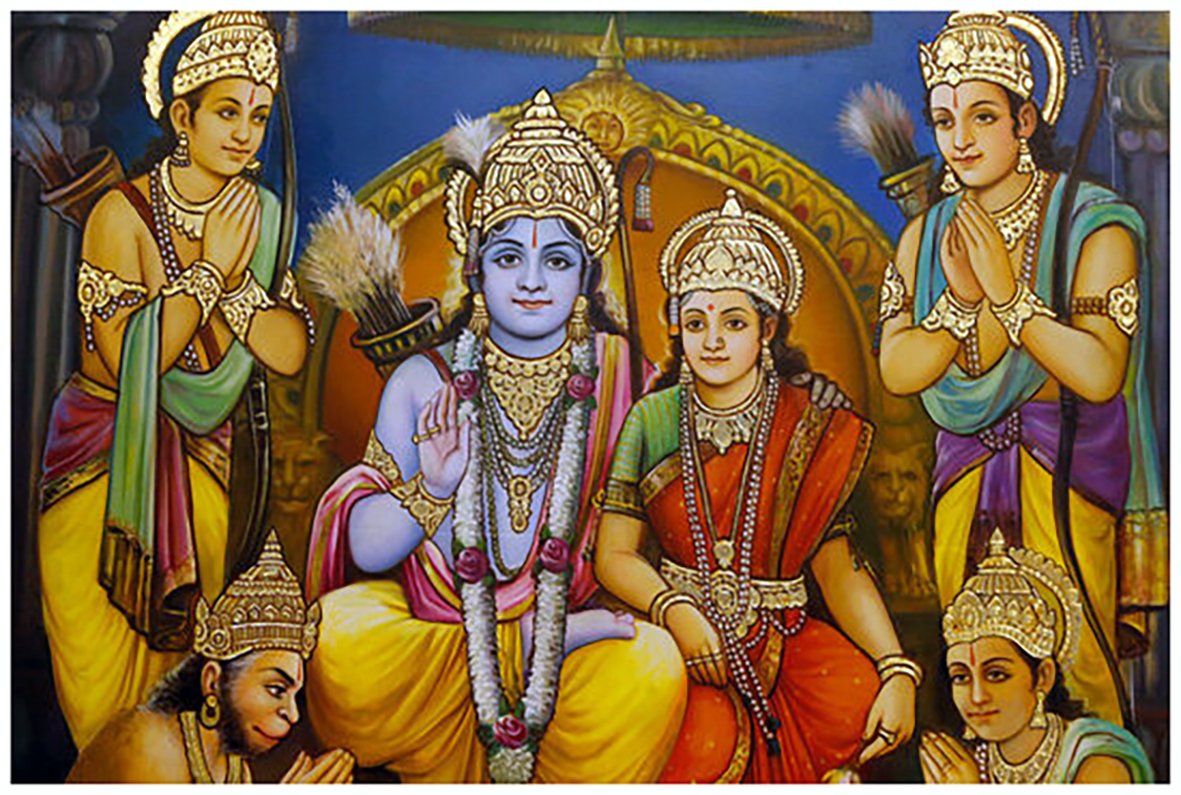
The ashram of Sage Bharadwaj where Ram, Sita, and Lakshman visited during their exile is located in the modern city of Prayagraj.
The ashram of Sage Bharadwaj, visited by Lord Ram, Sita, and Lakshman during their exile, holds a significant place in the epic narrative of the Ramayana. This site is believed to be located in the modern city of Prayagraj (formerly known as Allahabad), in the Indian state of Uttar Pradesh. Prayagraj is a city of immense religious, cultural, and historical importance, situated at the confluence (Triveni Sangam) of three rivers: the Ganges, the Yamuna, and the invisible Saraswati.
Historical and Religious Significance
- Sage Bharadwaj’s Ashram: The ashram is considered to be an important site for pilgrims and devotees of Ramayana, symbolizing the place where Lord Ram, along with Sita and Lakshman, received blessings and guidance for their journey ahead during their period of exile. The ashram served as a sanctuary and a place of spiritual learning and discourse.
- Prayagraj (Allahabad): The city itself is steeped in mythology and is one of the four sites of the Kumbh Mela, the largest religious gathering in the world. It is believed that a drop of nectar fell here from the celestial kumbh (pot) during the Samudra Manthan (churning of the ocean), making it a site of great spiritual power.
Cultural and Spiritual Impact
The association of Prayagraj with the Ramayana through the ashram of Sage Bharadwaj adds another layer to the city’s rich tapestry of religious and mythological significance. Prayagraj is a pivotal location in the spiritual landscape of Hinduism, not only because of its connection to the Ramayana but also due to its role in various other Hindu texts and traditions. The confluence of the three sacred rivers is believed to have purifying powers, attracting millions of pilgrims annually who come to bathe in the holy waters, especially during the Kumbh Mela.
The site of Bharadwaj Ashram and the city of Prayagraj remind visitors of the enduring legacy of the Ramayana and its teachings on duty, righteousness, and devotion. These locations serve as physical and spiritual landmarks that connect the past with the present, allowing devotees to reflect on the virtues exemplified by Lord Ram and the importance of guidance and blessings from revered sages.
Visiting Prayagraj and the sites associated with the Ramayana offers an opportunity for spiritual renewal and a deeper understanding of India’s rich religious traditions and cultural heritage.
9. Sringaverapura, Uttar Pradesh:
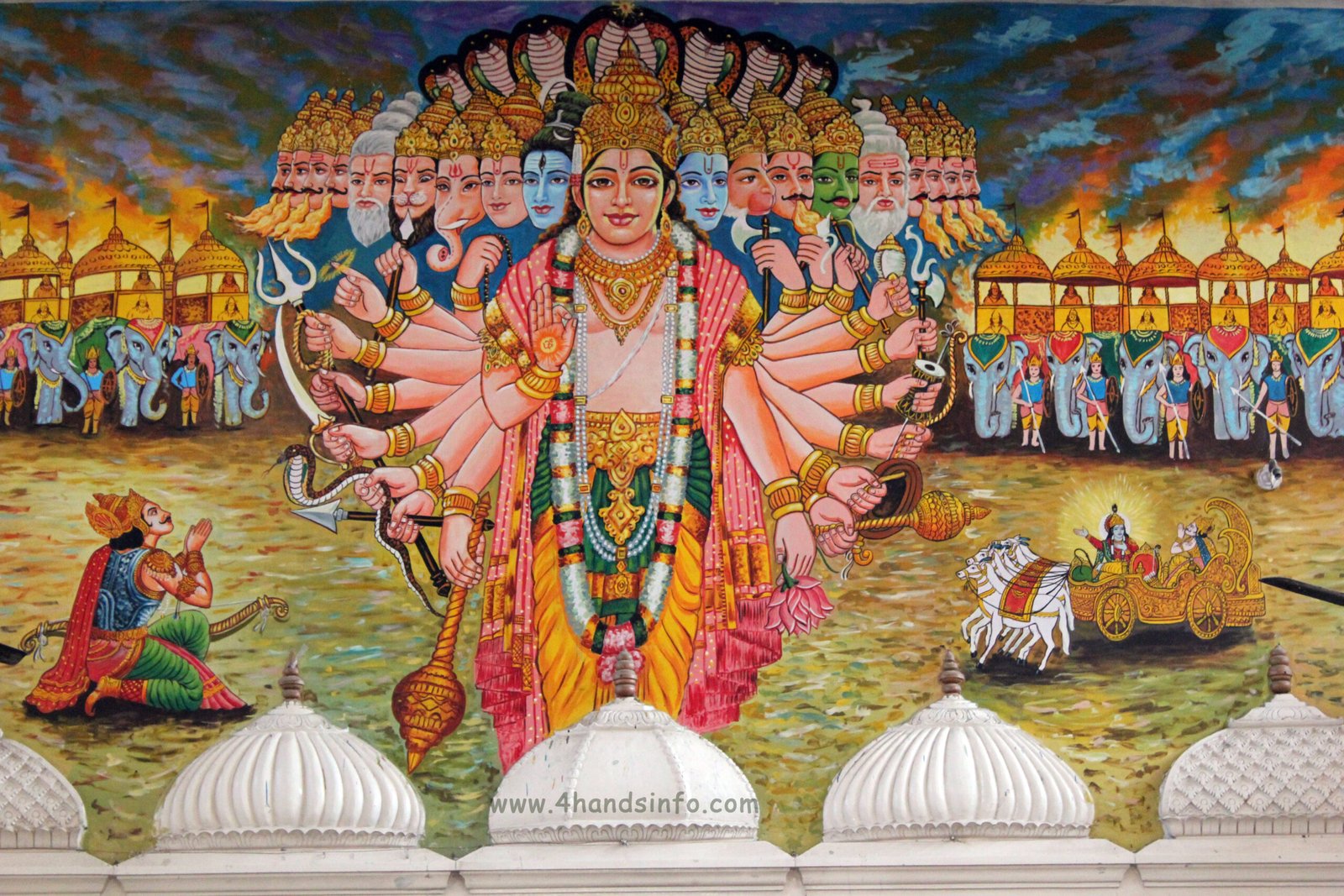
Near the modern town of Shringverpur, this is where Ram crossed the river Ganges during his exile, aided by Nishad Raj (King of Fishermen) Guha.
Near the modern town of Shringverpur, located in the Indian state of Uttar Pradesh, is an important site associated with the Ramayana. It is here that Lord Ram, along with Sita and Lakshman, crossed the river Ganges during their exile. This crossing was facilitated by Nishad Raj (the King of the Fishermen), Guha, who was a devoted friend and follower of Ram. The event marks a significant episode in the epic, highlighting themes of friendship, loyalty, and the adherence to dharma (duty/righteousness).
Historical and Religious Significance
- Nishad Raj Guha’s Assistance: Guha provided a boat for Ram and his companions to cross the Ganges, showcasing his unwavering devotion and respect for Lord Ram. This act of kindness and service is commemorated by devotees, and Guha is revered for his role in aiding Ram’s journey into exile.
- Shringverpur: The town is identified with the ancient site of the crossing and is considered sacred due to its direct connection to the Ramayana. Shringverpur hosts a temple dedicated to Nishad Raj Guha, which becomes a focal point for pilgrimage and religious observance, especially for those retracing the steps of Ram’s exile.
Cultural and Spiritual Impact
Shringverpur and the story of Guha and Ram illustrate the deep-seated values of friendship, loyalty, and duty that are central to the Ramayana and to Hindu ethical and moral principles more broadly. The narrative emphasizes the importance of helping others and fulfilling one’s duties with devotion, regardless of one’s social standing or circumstances.
For devotees and visitors, the site offers a tangible connection to the revered epic, allowing them to reflect on its teachings and the virtues of its characters. The act of crossing the Ganges, facilitated by a humble yet devoted figure like Guha, symbolizes the crossing of obstacles in life with the help of faith and the support of true friends.
Visiting Shringverpur provides an opportunity for spiritual reflection and a deeper appreciation of the enduring lessons of the Ramayana. It reinforces the significance of historical and mythological narratives in shaping cultural identity and moral values, serving as a reminder of the deep roots of these stories in the spiritual landscape of India.
10. Dhanushkodi, Tamil Nadu:
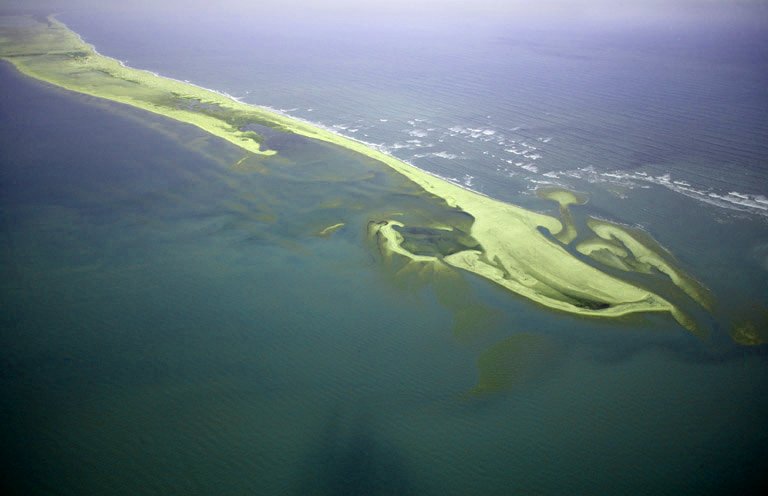
Situated at the tip of Pamban Island, it’s where Ram is said to have built Ram Setu (Adam’s Bridge) to cross over to Lanka. The town of Dhanushkodi, named after Ram’s bow, was washed away by a cyclone in 1964 but remains a place of pilgrimage.
Situated at the south-eastern tip of Pamban Island in the state of Tamil Nadu, India, Dhanushkodi is a place steeped in mythological, historical, and spiritual significance. According to Hindu mythology, it’s here that Lord Ram is said to have built a bridge, known as Ram Setu or Adam’s Bridge, to cross over to Lanka to rescue his wife Sita from the demon king Ravana. The name Dhanushkodi, which means “end of the bow,” is derived from the legend that Lord Ram marked this point with one end of his bow to begin the construction of the bridge.
Historical and Religious Significance
- Ram Setu (Adam’s Bridge): This chain of limestone shoals running between Pamban Island, near Dhanushkodi, and Mannar Island, off the northwestern coast of Sri Lanka, is believed by many to be the remnants of the mythical bridge. While scientific studies suggest natural formations, the bridge holds immense mythological and spiritual importance, symbolizing the efforts and devotion of Ram and his army.
- Dhanushkodi Town: Before the devastating cyclone of 1964, Dhanushkodi was a vibrant town, but it was almost entirely washed away by the natural disaster. Today, the ruins of Dhanushkodi attract tourists and pilgrims alike, serving as a poignant reminder of nature’s power and the enduring human spirit of devotion.
Cultural and Spiritual Impact
Dhanushkodi, despite its tragic history, remains a place of pilgrimage due to its association with the Ramayana and Lord Ram’s legendary bridge. The site draws visitors not only for its mythological significance but also for its serene beauty and the sense of peace it offers. Pilgrims and tourists are moved by the story of devotion, perseverance, and divine intervention that Dhanushkodi symbolizes.
Visiting Dhanushkodi
For those who visit, Dhanushkodi offers a unique blend of natural beauty, historical ruins, and spiritual ambiance. The journey to this remote and somewhat desolate place is often described as a journey back in time, offering a moment of reflection on the powerful stories that shape human faith and cultural identities. The view of the sea, the ruins, and the tales of the past make Dhanushkodi a deeply moving destination for many.
In the broader context, Dhanushkodi exemplifies the rich tapestry of mythology, history, and spirituality that characterizes many sites across India, serving as a testament to the country’s deep-rooted cultural and religious traditions.
These places are not only of immense religious significance but also offer insights into the cultural and historical fabric of the regions, drawing pilgrims and tourists interested in the epic tale of the Ramayana.

